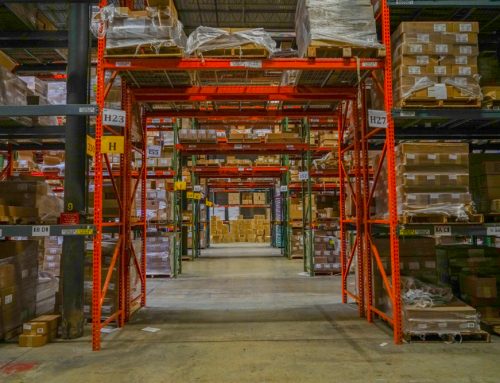We are living in a world where globalization is increasing, and the customers’ expectations are continuously changing. If you compare the supply chain of today and the past, you can notice a considerable gap. For your healthcare supply chain text requirement to catch up with these changes, you should implement some tested and proven practices.
That said, there is a need for an effective supply chain if you want to improve quality and cut down costs. Doubtlessly, an efficient supply chain in your healthcare facility will upgrade your delivery services.
Honestly speaking, it’s not easy to manage complex supply chains. Fortunately, here are some simple practices you can apply to your healthcare supply chain text requirement and notice some changes.
1. Manage Contracts Carefully
You don’t want to lose your contracts to your competitor. One of the recommended ways that many providers use is to contract your processes to group purchasing organizations (GPOs). That explains why many health care centers use them.
These GPOs can leverage contracts excellently based on the member’s purchasing power to negotiate excellent contracts. They’re also great in helping providers to save their hard-earned dollars when it comes to products and services cost. Though GPOs are useful in managing contracts, you should pay more attention to your contract by examining pricing.
You should determine the rates which the competitors have set and the amount charged by health plan contracts since they’ll affect the service prices set. The two marketing forces should be included in the hospital’s capital structure. Failure to focus on these forces and contracts may cause you to be overcharged or, even worse, your products to expire.
You should check your purchasing contract carefully to identify if your vendors have included “strict confidentiality clauses” on negotiated prices.
2. Build Effective Inventory Management
Poor inventory management may result in product expiry, contributing to the loss of revenue and hurting your profit margin. That explains why you should consider having an effective inventory management system. However, many providers find it challenging to move their inventory through the supply chain.
Your healthcare chain should use a high-quality equipment management system that can unfailingly track and manage your inventory levels. It’s good to note that without an effective equipment management system, you can incur extra costs, causing over-ordering or underutilizing the existing equipment.
Moreover, you should ensure your executives scrutinize the organization and supplier partners when managing the level of inventory. They should aim to create synergy between the groups while maintaining effectiveness.
Also, aim at collaborating well with your suppliers and providers to maintain a healthy inventory level and ensure products reach the end user before they expire. Excellent collaboration leads to reduced cost; something that every company wishes to achieve.

3. Let technology Do the Work
If you want to improve your healthcare supply chain text requirements successfully, no doubt, you’ll want to implore effective technology and analytics, which ensures your operations are running smoothly. Automating your processes ensure that you eliminate all possible difficulties in your supply chain. This technology tracks day-to-day processes and makes data visible hence transforming your supply chain into more of a strategic business asset.
Again, effective technology and automation prevents you from wasting your funds and ensures more transparent and data-driven choices. However, before investing in a particular technology, you should review the processes that should be improved on. Then you can opt for the most suitable technique for the process you need.
Many companies will first select a technology that they hope will be efficient, and then they start structuring their processes and workflows based on that technology, which is wrong. A-class companies understand that systems should help them to manage their supply correctly. They use the technology to generate beneficial information, make data accurate and accessible, and later use it to make sound decisions.
4. Installing Effective Pricing Systems
First off, determine the cost of the pricing system. Your accounting system should evaluate the cost incurred in each service using the cost-accounting systems. Most of the organizations use their accounting methods to run their pricing systems smoothly.
It’s worth noting that pricing systems must come with a pricing strategy. Your team should capture, monitor, track, and manage all information related to supplies and any other expenses.
Also, these systems help you to know how much to charge at each level in your institution. With this system, you’ll have all insights on pricing, how to add more value, and how to minimize cost.
Lastly, on pricing systems, they help in comparing your prices with your competitors. This is made easy since your system will automatically generate your pricing. Your competitor’s pricing is available on the public or commercial databases. You can visit them and try to compare them to make a viable pricing decision.
5. Increase Order Accuracy and Order Turnaround

Many healthcare providers can’t help when it comes to ordering errors. It’s not difficult to find that you’ve ordered the wrong product. Receiving the faulty product means you’ll lose your revenue, waste time, and incur added costs.
Additionally, wrong orders can lead to incorrect medication, which in turn can lead to poor health results from your facility. Consequently, you may end up losing your trusted customers. That explains why you need to be careful when it comes to the supply chain.
Research by Agency for Healthcare Research and Quality (AHRQ) shows that the highest percentage of inpatient medication errors occur either during the ordering or transcribing process. Therefore, you should make possible efforts to improve your ordering accuracy before a mess occurs.
If errors are eliminated, time wasted on reordering the correct product is saved and utilized in performing other essential duties in your organization. The best thing to do is to invest in order controls that’ll definitely help you in improving your efficiency in the supply chain. Getting a computerized order entry system can save you from the headache of a miserable reordering process. Such a system assists you much in reducing the turnaround time in ordering your healthcare items.
6. Establish a Healthy Relationship with Your Suppliers
Every successful health facility knows the value of cultivating a great alliance with their suppliers. What does that mean? You should work closely and in harmony with your supplier from the time you sign in a deal.
Unfortunately, the buyer dominates most of the relationships we have today. For you to reap the best results in your health facility, allow two-way communication. Allow the supplier to help you in managing your facility and avoid dictating everything that you want it done.
Alliance management can be the best practice to improve your healthcare supply chain text requirement; this is where there is always a representative from your side and your suppliers’ side. This builds a healthy relationship. When you have effective alliance management, first, you can easily create a problem resolution platform since differences can occur from either side. Secondly, you can ensure that all management objectives you’ve set are achieved. Also, this alliance develops continuous improvement goals, which help to make great value for you and your supplier. And lastly, it helps both of you to keep your relationship healthy and vibrant.
Having a solid alliance with your supplier, you can concentrate more on sustaining your value and continuously seek ways to improve where necessary.
7. Establish Appropriate Control Levels
All your supply chain management policies, as well as procedures, must be aligned with an appropriate sequence and structure. Review these policies and procedures frequently and update them if need be.
The best healthcare facilities always review their policies and procedures to confirm that they are acting within the safe borders. With the correct control levels, you can easily deter fraud, theft or other problems.
8. Minimize Risk
Risk mitigation is one of the areas that established healthcare facilities don’t take for granted. Even their policies and regulations involve some of the things that help to minimize risk. Therefore, you should consider integrating risk mitigation strategies in your sourcing decision process.
Some of the popular and sound risk strategies include: one, track all possible elements. Two, assess the probability of each risk event occurring. Three, determine the monetary impact that could arise if that risk occurs. And lastly, prioritize the risks to find the best way to monitor and prevent.
9. Hire Professionals
Having the wrong staff on your supply chain management Richmond can affect your effectiveness and prevent you from enjoying lots of benefits. Professionals will make every operation effective, leading to improved service.
There are different management structures that you can use. However, despite the strategy you use, you should know that correct staffing is vital for your supply chain success. Ensure to prioritize on staff who are experienced and have the right knowledge and skills if you want to prosper.
For the top management staff, ensure that they have additional characteristics apart from skills and knowledge. The best managers are those who have a long history of communication and relationship management skills, who are focused on value creation and able to think strategically.
Are you looking for an expert who can help you improve your supply chain text requirements? Don’t look anymore. At Orbit Same Day Courier Service Richmond VA, we’ll excellently help you strengthen your transport services while reducing costs.






